Last updated on
Discover the best locations for placing outlets in your kitchen to maximize convenience, safety, and functionality as you cook up a storm.
The kitchen is the heart of every home, where family and friends gather to cook, eat, and socialize. But with all the appliances and gadgets we use in modern kitchens, finding enough outlets can be a challenge.
Where should you put outlets in your kitchen to make sure you have enough power for all your needs? In this article, we’ll explore some smart strategies for placing outlets in your kitchen so that you can enjoy cooking and entertaining without worrying about running out of juice!
What's Inside
Outlet Placement Basics

Before you start planning where to put outlets in your kitchen, it’s important to understand some basic principles of electrical safety and functionality. First, make sure that all the wiring and installation work is done by a licensed electrician who follows local building codes and regulations.
Electrical code rules vary depending on your location, so check with your city or county government for specific requirements.
Next, assess how much power you need in each area of the kitchen based on what appliances or devices will be used there. For example, countertop areas where small appliances like blenders or coffee makers will be used may require more outlets than other areas.
Consider both function and aesthetics when deciding where to place outlets. You want them to be easily accessible but not too obtrusive visually.
Know Electrical Code Rules and Restrictions
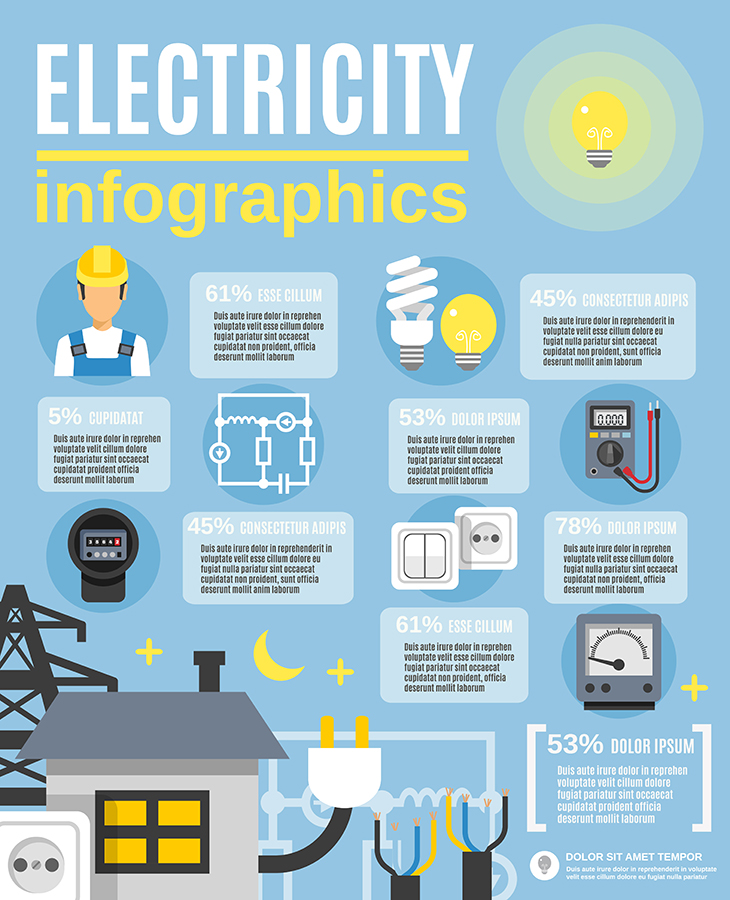
Electrical codes are designed to ensure safety and prevent hazards such as electrocution, fires, or damage to appliances. These codes vary by location but generally require a minimum number of outlets based on the size of your kitchen and specific requirements for outlet placement.
For example, most building codes require at least two 20-amp circuits dedicated solely for countertop receptacles in a modern kitchen. The National Electrical Code (NEC) also requires GFCI protection for all receptacles installed within six feet of sinks or wet areas.
It’s essential that you follow these regulations when installing new outlets or modifying existing ones in your home. Failure to comply with electrical code rules can result in fines from local authorities if discovered during an inspection or worse yet; it could lead to dangerous situations like electric shocks which may cause injury or death.
Assess Your Kitchen’s Electrical Power Needs
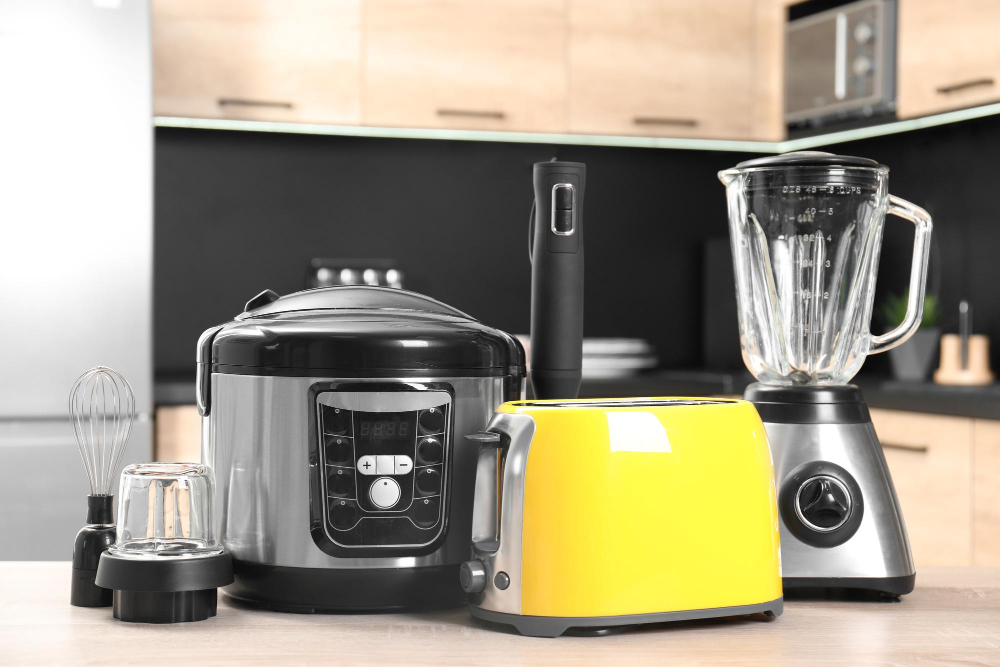
Consider the appliances and gadgets that you use most often in your kitchen, such as blenders, mixers, coffee makers, and toaster ovens. These items require a lot of power and should be plugged into dedicated circuits with their own outlets.
You’ll also want to think about any future upgrades or renovations that may require additional electrical capacity. For example, if you’re planning on installing an electric range or double oven down the line – make sure there is enough space for these appliances.
It’s always better to have more outlets than not enough so consider adding extra ones when possible.
Building Codes and Regulations

Electrical codes vary by state, so make sure you check with a licensed electrician or local building inspector before starting any electrical work.
In general, there are some basic rules that apply to all kitchens. For example, outlets must be installed at least 20 inches above countertops and no more than 12 feet apart along walls without obstructions.
Outlets should also be GFCI-protected (ground fault circuit interrupter) for safety reasons.
Planning Outlet Locations

The key is to think about convenience and safety. You want outlets in places that are easy to reach but won’t interfere with your cooking or create a hazard.
Start by mapping out the locations of all major appliances, including the refrigerator, stove, dishwasher, and microwave. These will be your primary sources of power consumption in the kitchen.
Next consider smaller appliances such as coffee makers or blenders that may need an outlet nearby for convenient use.
Also keep in mind any lighting fixtures you may want installed above countertops or islands which would require their own dedicated circuitry separate from other outlets.
Countertop Outlets

The most common location for a countertop outlet is on the backsplash, just above the counter surface. This placement keeps cords out of sight and allows you to use multiple appliances at once.
Another option is installing pop-up outlets directly into your countertops. These are especially useful if you have an island or peninsula where people gather around while cooking or entertaining.
Keep in mind that electrical codes require that all kitchen countertop receptacles be GFCI-protected (ground fault circuit interrupter). This safety feature shuts off power automatically if there’s any risk of electric shock due to water exposure or other hazards.
Island and Peninsula Outlets

These areas are often used for food preparation or as a breakfast bar where people can sit down to eat. Therefore, having easy access to electrical outlets is crucial.
When planning the placement of your island or peninsula outlets, consider how you will use these spaces. If you’re going to be using them primarily for cooking prep workstations with countertop appliances such as stand mixers and food processors plugged in all day long – then placing multiple outlet boxes on each side of the unit would be ideal.
On the other hand, if your island is more of a seating area than a workspace – installing one outlet box at either end should suffice since most people won’t need more than one plug-in at once while sitting there.
Appliance Outlets
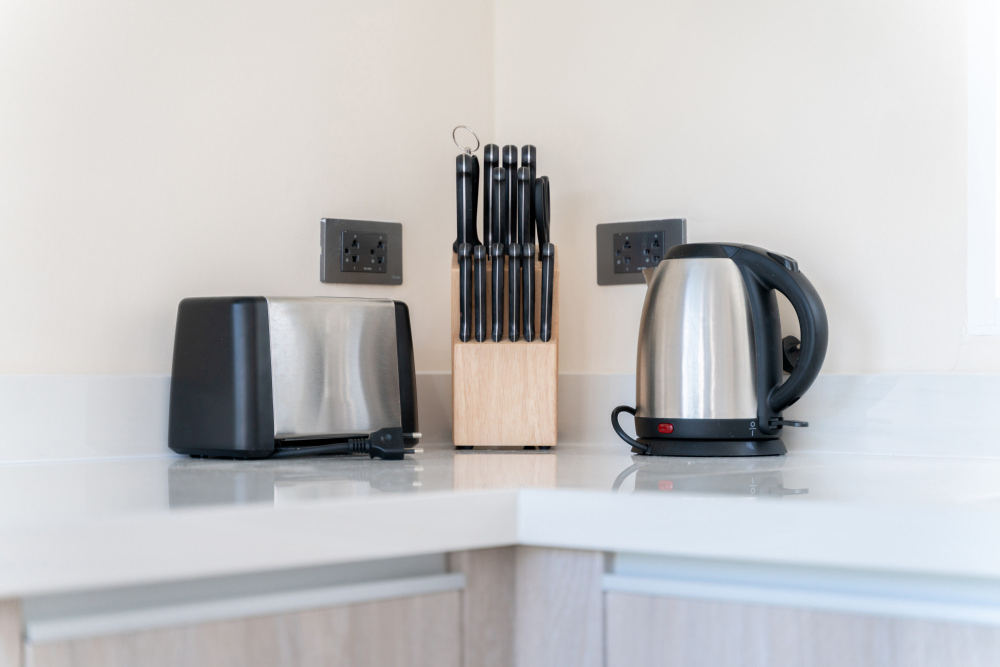
Large appliances like refrigerators, dishwashers, and ovens require dedicated circuits with higher amperage ratings than standard outlets. Make sure these appliance circuits are installed by a licensed electrician who understands local building codes.
For smaller countertop appliances such as blenders or mixers, you may want to consider installing additional electrical outlets above the counter level for easy access. This will help prevent cords from dangling over the edge of countertops and creating tripping hazards.
If you have an island in your kitchen with built-in cooking surfaces or other electrical features like warming drawers or wine coolers, make sure there are enough outlet options available on all sides of the island so that everyone can use them comfortably.
Outlet Heights

The standard height for electrical outlets in most rooms of a house is about 12 inches above the floor. However, this may not be ideal for all kitchen applications.
For example, if you have a countertop that’s higher than average or if you’re installing outlets on an island or peninsula where people will be sitting and eating, you may want to consider raising your outlets accordingly.
On the other hand, if you have young children at home who might accidentally touch hot appliances or spill liquids near electrical sockets while playing around with them; placing your outlets too low could pose safety risks. In such cases GFCI (Ground Fault Circuit Interrupter) protection should also be considered as they can detect ground faults and shut off power before any harm occurs.
Outlet Spacing
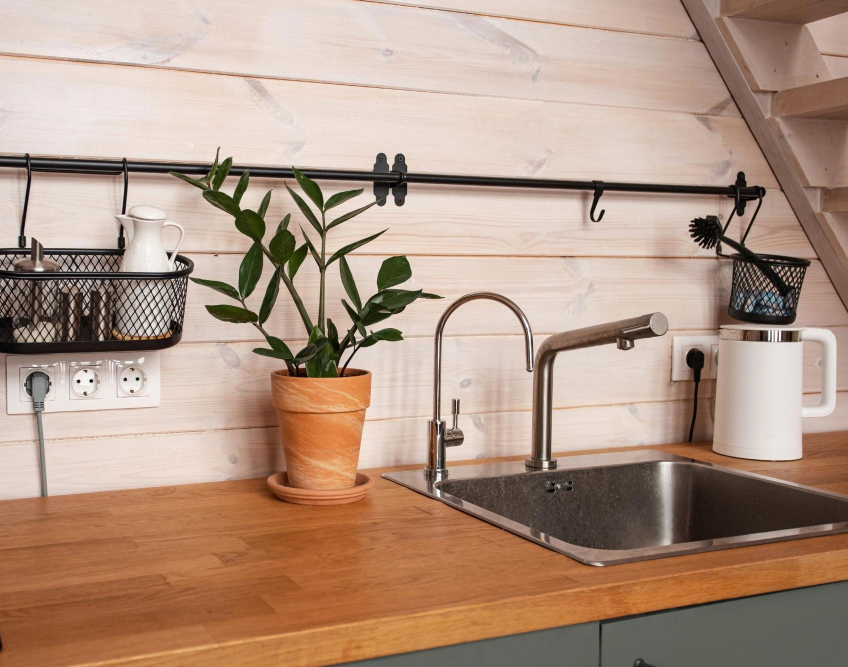
This ensures that you have enough outlets to power all your appliances and gadgets without having cords running across your countertops or floors. However, this is just a minimum requirement; you may need more outlets depending on how many appliances and devices you use in your kitchen.
Another important consideration when planning outlet spacing is the distance between each individual outlet. Ideally, there should be no more than 12 feet between any two outlets along a wall or countertop surface.
This helps prevent overloading circuits and reduces the risk of electrical hazards.
It’s also worth noting that some areas in your kitchen may require additional outlets due to their specific functions or usage patterns. For example, if you have a coffee station with multiple machines like an espresso maker and drip coffee machine, consider adding extra outlets nearby for convenience.
Over-the-Counter Outlets

These outlets are often called over-the-counter or OTC outlets and they provide easy access to power for small appliances like blenders, mixers, and coffee makers. They also eliminate the need for cords hanging down from under-cabinet mounted appliances.
When planning where to place OTC outlets in your kitchen, consider how you use your countertops. If you have a dedicated prep area or frequently use small appliances on one side of the counter more than others, it may make sense to install an outlet there.
It’s important to note that building codes require GFCI protection for all electrical receptacles installed within six feet of sinks or wet areas in kitchens (and bathrooms). This means that any OTC outlet near a sink must be protected by GFCI circuitry either at the breaker panel level or via an individual GFCI receptacle device installed upstream from it.
Under-Cabinet Outlets

These outlets are perfect for powering appliances that you use on your countertop, such as blenders, mixers, and toasters. By placing these outlets underneath the cabinets instead of on top of them or in a backsplash area, you can keep cords out of sight and reduce clutter on your countertops.
When installing under-cabinet outlets, make sure they are positioned far enough back so that they don’t interfere with any upper cabinet doors when opened. Also consider how much space you need between each outlet to accommodate larger plugs or adapters.
GFCI Protection
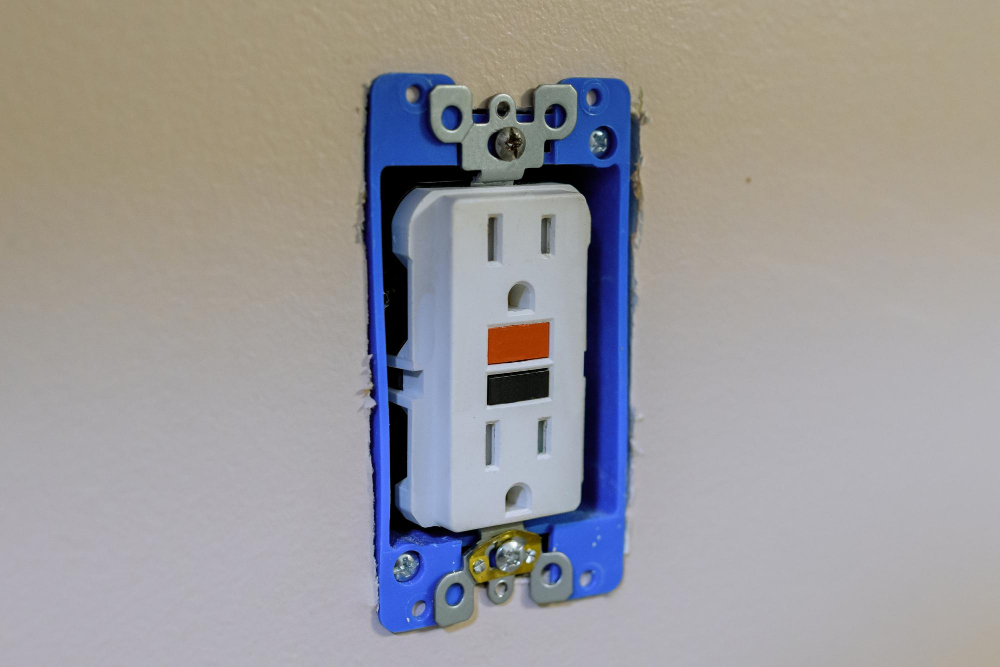
Ground Fault Circuit Interrupter (GFCI) protection is required by electrical codes for all outlets in the kitchen that are within six feet of a sink or water source. GFCIs protect against electric shock by quickly shutting off power when they detect an imbalance in the electrical current.
To ensure your kitchen meets code requirements and stays safe, make sure all countertop outlets and any other outlet near water sources have GFCI protection installed. If you’re not sure whether your existing outlets have this feature, look for test/reset buttons on the outlet faceplate – these indicate that there’s built-in GFCI protection.
If you need to install new outlets or upgrade existing ones with GCFIs, it’s best to hire a licensed electrician who can ensure proper installation and compliance with local building codes.
Outlet Types and Styles
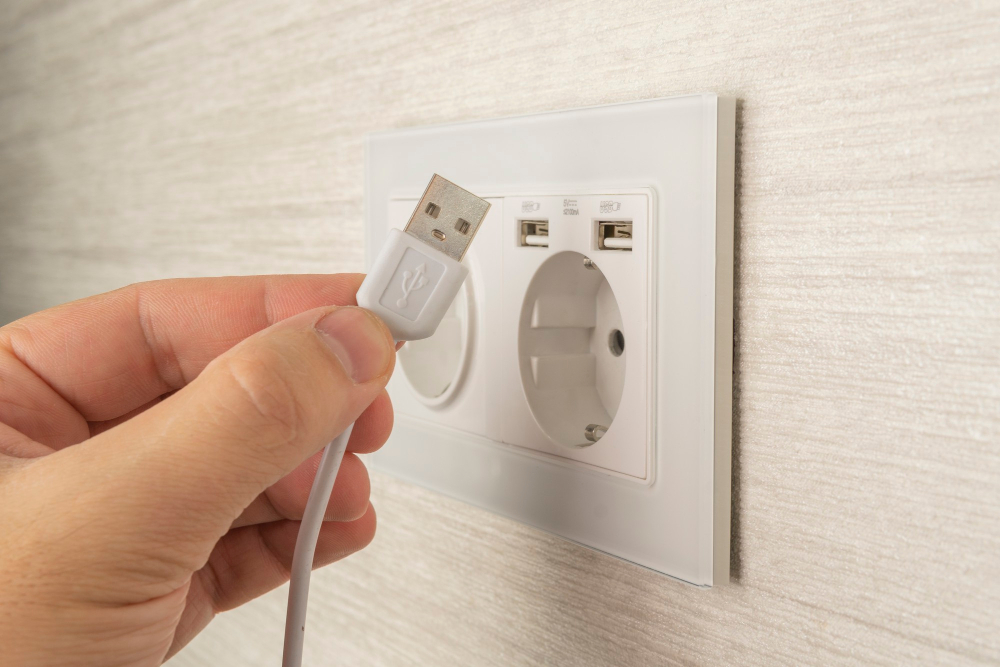
The most common type of outlet is the standard duplex receptacle, which has two outlets in one unit. However, you can also opt for GFCI (ground fault circuit interrupter) outlets that provide extra protection against electrical shock in wet areas like your kitchen sink or countertop.
Another option is USB charging outlets that allow you to charge your devices directly from the wall without needing an adapter. These are especially handy if you have limited counter space or want a clutter-free look.
In terms of style, there are many different finishes available such as white plastic, stainless steel or brushed nickel that can match with your kitchen decor seamlessly while providing functionality at the same time.
Outlet Safety Tips
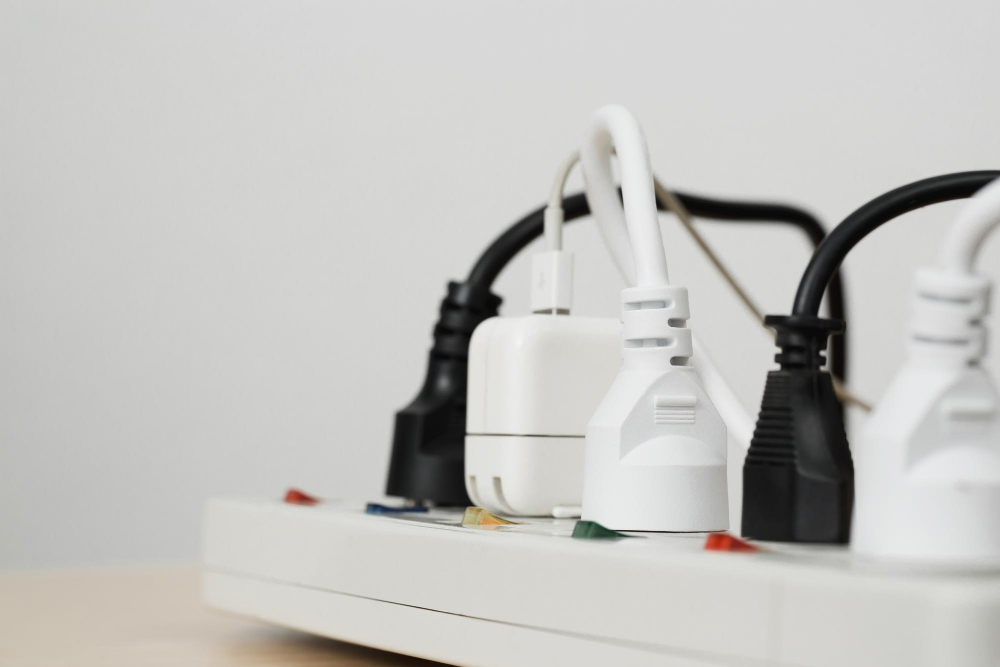
Electrical hazards can cause serious injuries or even fires if not handled properly. Here are some outlet safety tips to consider when installing new outlets:
- Use Ground Fault Circuit Interrupters (GFCIs) for all countertop and sink area outlets.
- Avoid using extension cords as a permanent solution.
- Don’t overload circuits by plugging too many appliances into one outlet.
- Keep flammable materials away from electrical sources, including outlets and cords.
- Regularly check your electrical system for signs of wear or damage.
Kitchen Outlets DIY or Professional Installation
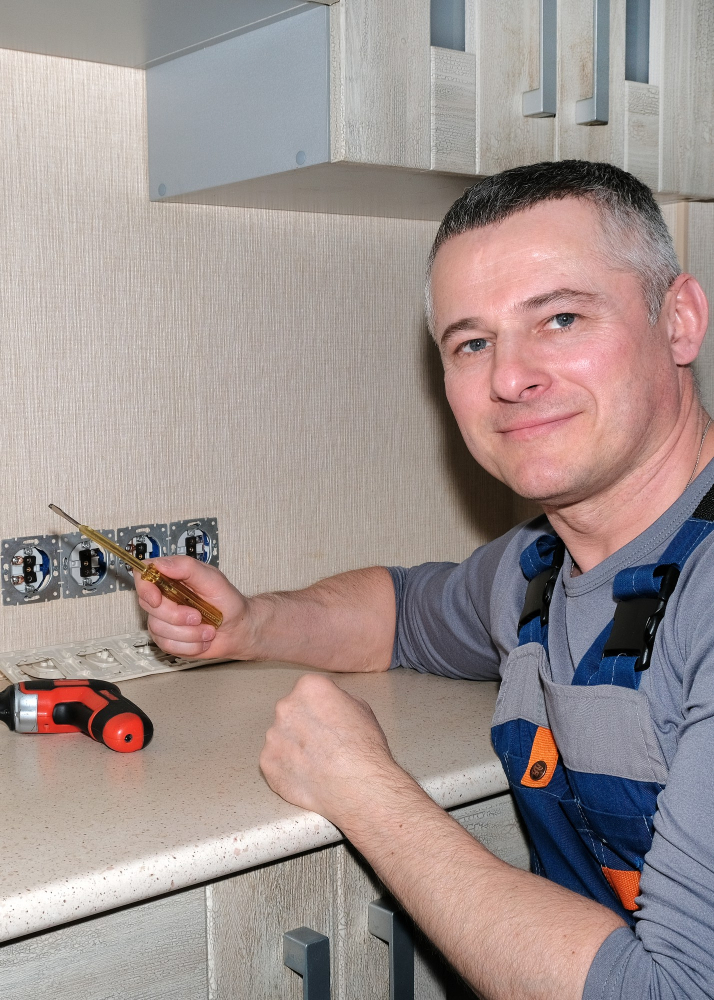
While some homeowners may feel confident tackling this project on their own, others may prefer the peace of mind that comes with hiring an expert.
If you’re considering a DIY installation, keep in mind that electrical work can be dangerous and mistakes can lead to serious injury or property damage. Before starting any electrical project, make sure you understand local building codes and regulations and have the necessary tools and skills for the job.
Professional installation is often recommended for complex projects such as adding new circuits or retrofitting additional outlets into existing walls. An experienced electrician will ensure that all wiring is up to code and properly grounded for safety purposes.
Ultimately, whether you choose DIY installation or professional help depends on your comfort level with electrical work as well as the complexity of your project.
Balancing Function and Aesthetics

After all, you don’t want unsightly outlets and cords detracting from your beautiful backsplash or countertop. Fortunately, there are many ways to balance function and style when planning outlet locations.
One option is to choose outlets that match the color of your walls or cabinets so that they blend in seamlessly. Another approach is to install under-cabinet outlets that are hidden from view but still easily accessible for plugging in appliances.
You can also consider using decorative covers for your outlets that complement the overall design of your kitchen. For example, if you have a farmhouse-style kitchen with rustic wood accents, you might opt for antique brass covers with intricate details.
Ultimately, finding a balance between function and aesthetics will depend on personal preference as well as practical considerations such as electrical code requirements and safety regulations.
Outlet and Switch Combinations
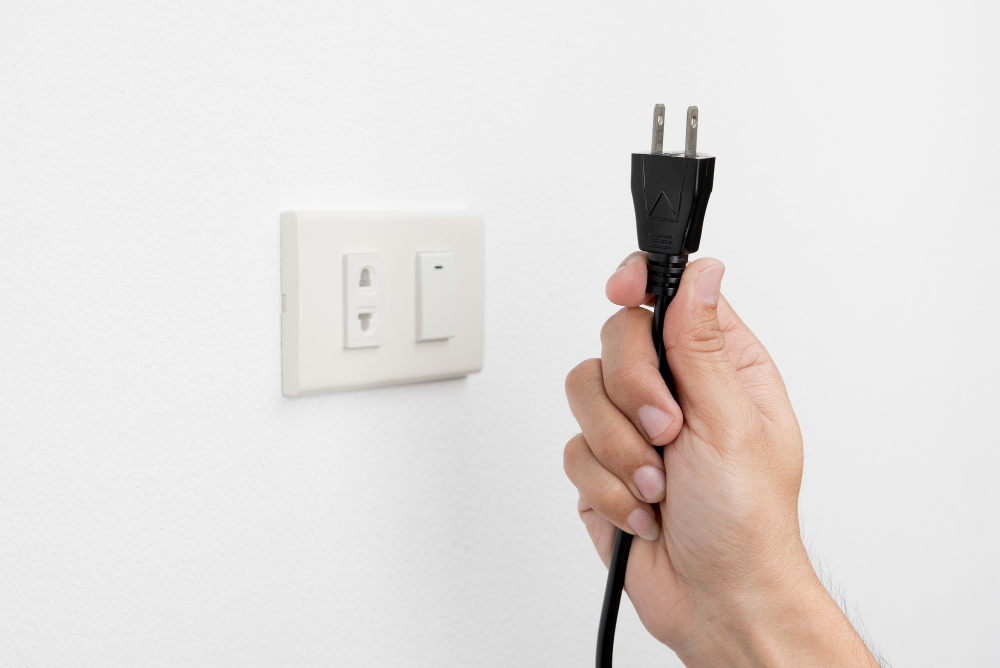
This is especially useful for areas where you need both lighting and power, such as above the sink or stove. By installing an outlet/switch combo unit in these locations, you can save space on your walls while also making it easier to turn lights on and off.
These units come in various configurations that allow for one switch controlling one outlet up to three switches controlling multiple outlets. They are available in different colors and styles so that they match the rest of your kitchen’s decor.
When choosing an outlet/switch combination unit, make sure it meets electrical code requirements for spacing between devices. Also ensure that there is enough room inside the wall box to accommodate both components safely.
Retrofitting Additional Outlets
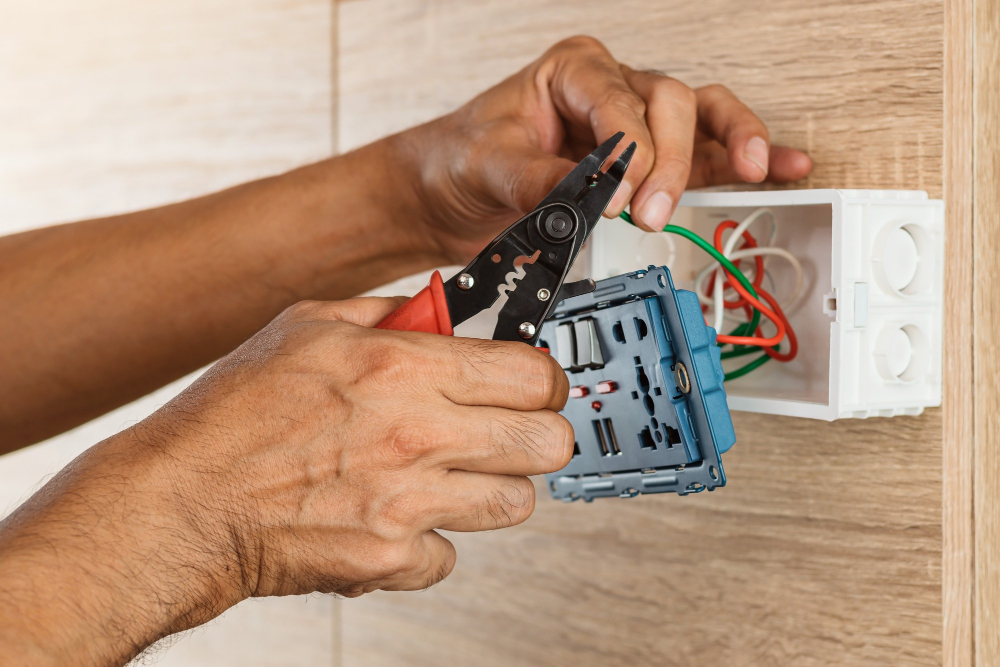
Fortunately, retrofitting additional outlets is a relatively easy and affordable solution. You can add new outlets by tapping into existing circuits or running new wiring from the electrical panel.
When retrofitting additional outlets in your kitchen, consider hiring a licensed electrician to ensure that the work is done safely and up to code. They will be able to assess your current electrical system and determine if any upgrades are necessary before adding more power-hungry appliances.
It’s also important to plan out where you want these extra outlets placed so they don’t interfere with other elements of your kitchen design or create safety hazards. For example, placing an outlet too close to a sink could lead to water damage or electrocution risks.
USB Charging Outlets
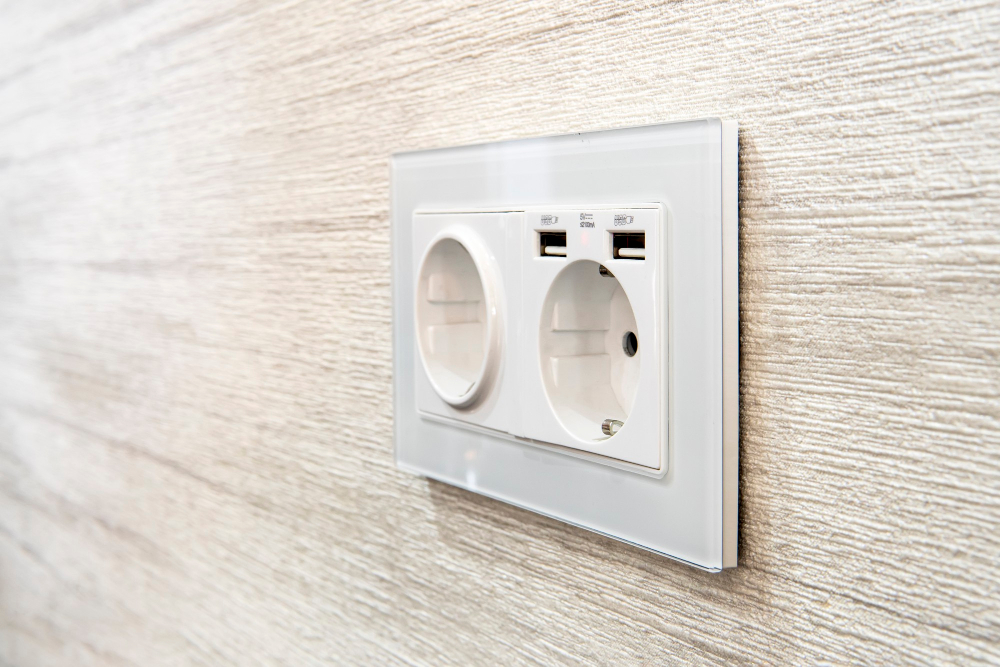
Our smartphones, tablets, and other devices also need to be charged regularly. That’s why USB charging outlets have become increasingly popular in kitchens across the country.
These outlets feature built-in USB ports that allow you to charge your devices without having to use a separate adapter or plug them into a computer. This can be especially convenient if you like listening to music or following recipes on your phone while cooking.
When planning outlet locations in your kitchen, consider adding some USB charging outlets near areas where you’re likely to use your devices most often – such as at the island or peninsula seating area.
With these simple tips for outlet placement and installation in mind – including incorporating modern features like USB charging ports – you’ll be able to create a functional and safe kitchen space that meets all of your electrical needs!
FAQ
Where should outlets be placed in kitchen counter?
In kitchen counters, outlets should be placed no farther than 48 inches apart with no point on the countertop being more than 24 inches away from a receptacle, and any countertop 12 inches wide or more should have an outlet on the wall behind it.
What is the rule for kitchen outlets?
Rule for kitchen outlets: The National Electrical Code (NEC) mandates that every piece of counter 12 inches or wider must have an outlet over it, with at least one outlet every 4 feet.
What is the 6 12 rule for outlets?
The 6-12 rule for outlets, based on NEC 210-52, requires that no point on a wall is more than 6 feet from an outlet, with a maximum of 12 feet between outlets on a long wall, and an outlet must be within 6 feet of a doorway or fireplace.
Where should outlets be placed in backsplash?
Outlets should be placed slightly lower than normal and possibly horizontally at the beginning of the backsplash tile arrangement to blend well with the space.
How many outlets are recommended for a kitchen island?
The recommended number of outlets for a kitchen island is at least two.
What are the guidelines for placing outlets near the sink or other water sources?
Guidelines for placing outlets near the sink or other water sources require a minimum distance of 6 feet to prevent electrical hazards.
Are there any specific regulations related to GFCI outlets in a kitchen?
GFCI outlets are required for kitchen countertop receptacles and within 6 feet of a sink to protect against potential electrocution.




